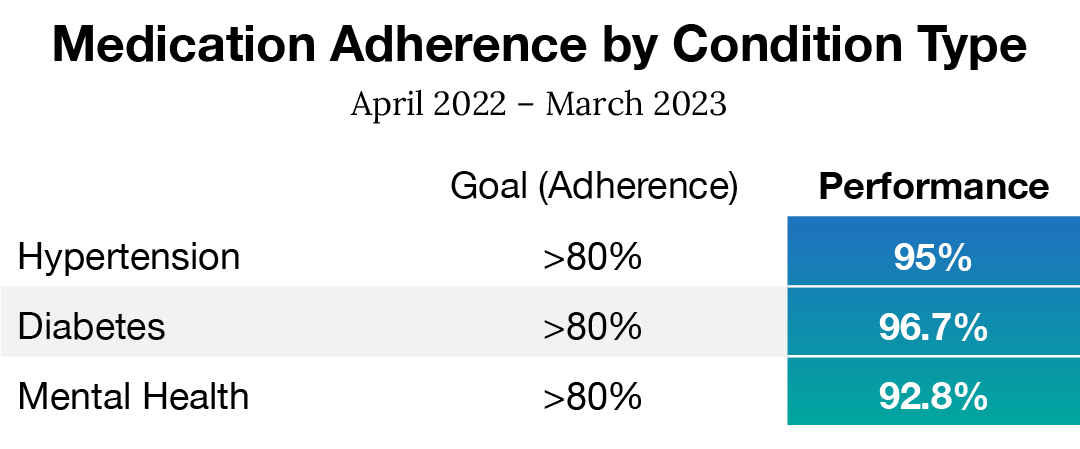How an aircraft manufacturer saved over $1M in year one by taking a Total Worker Health® approach
This global leader in small aircraft production has partnered with Premise Health for occupational healthcare since 2018 and recently expanded to a patient-centered medical home to improve health outcomes and generate tremendous savings in the first year.
The Challenge
Prior to 2018, the organization based in south-central Kansas operated their occupational health program in-house. They first partnered with Premise to revitalize their current occupational medicine program and grow primary care benefits for their employees and dependents in the future. Looking for additional benefits to prioritize their employees’ wellbeing, they expanded their offering from just occupational health to promoting the total wellbeing of the worker with a full patient centered medical home (PCMH) primary care model in 2022.
With the goal of opening a health center at their largest facility in south- central Kansas, the organization identified their top priorities:
- Reduce employee out-of-pocket medical costs
- Engage employees that haven’t prioritized their healthcare needs due to cost or other factors
- Design the health center to be an innovative recruitment and retention tool
- Support a holistic wellbeing focus for their people
The Solution
Focused on reducing costs and improving outcomes, this aircraft manufacturer launched a new health center utilizing the PCMH model. This model combines barrier-free access, seamless experiences, a holistic approach, and personalized care to achieve an enhanced primary care solution. By addressing key barriers to care – such as inconvenient locations and high out-of-pocket costs, the organization leveraged the PCMH model to vastly improve the healthcare experience for members and their dependents. The organization fully embraced this approach by opening their center to the entire workforce and their families.
Complementary services for whole-person care
Beyond comprehensive primary care, there are a multitude of additional services offered at the wellness center including: radiology, lab work, chronic condition management, wellness coaching, physical therapy, behavioral health, a drive-through pharmacy, and virtual access to the local care team.

The Outcome
By expanding services offered at their new wellness center, the organization saw massive savings in both primary care and pharmacy spending. During the first year of operation, April 2022 to March 2023, their total cost of care savings amounted to $1.2 million. The organization also saw a positive 1.1 return on investment during this period. Here are some of the factors that made this possible.
Increase in preventive visits, decrease in costly emergency services
By making primary care the main focus of their new wellness center, the organization saw preventive visits rise, while more costly forms of care such as emergency room visits and inpatient days decreased. Routine office visits alone increased over 100% from the previous year, showing that members were prioritizing regular primary care through the center. Additionally, as a result of more primary care visits, preventive screenings like mammograms and colonoscopies increased as well.

Less reactive care compared to the community
When compared to those receiving a majority of their care in the surrounding community, this employer’s members had lower rates of reactive care overall. This includes cost-prohibitive services such as urgent care visits and total hospital admissions. Meanwhile, their total office visits were higher than their counterparts in the community. Inpatient days and total admissions rates were less than half for Premise-attributed members when compared to the community.

Improved chronic condition care
Members with specific chronic conditions, such
as diabetes and hypertension, utilized primary and preventive care more and visited the ER less. When individuals with chronic conditions have the support of a primary care provider, they have the tools to make more proactive health decisions and can avoid emergency care by prioritizing preventive services, as we saw with this organization.

Greater medication adherence
By including an onsite pharmacy with their wellness center, members managing chronic conditions were able to access and properly take their medications. With the support of a dedicated pharmacy team, medication adherence never fell below 92%.

Dual value for occupational health
By offering physical therapy and radiology as complementary services, members were able to utilize the new wellness center for both primary care and occupational health visits. Traditionally costly and time-consuming services such as x-rays and injury treatment were available onsite, so employees could get the care needed to return to work. These types of services provide dual value to the organization through use in both primary care and occupational health settings.

When this employer chose to expand their occupational health program to include primary care through the PCMH model, they made a conscious decision to prioritize their employee’s wellbeing. By taking a Total Worker Health® approach and improving access to primary care, members were engaging in preventive care more and utilizing emergency services less, which achieved the organization’s goals of reducing out-of-pocket costs and engaging employees with their health.
Additionally, their new health center now serves as a showpiece of their employee benefits and will be used as a recruitment and retention tool for years to come. Overall, through this evolution and partnership with Premise Health, the organization has successfully proven their commitment to employee wellbeing for years to come.
Source: National Institute for Occupational Safety and Health, Total Worker Health® is a registered trademark of the U.S. Department of Health and Human Services


